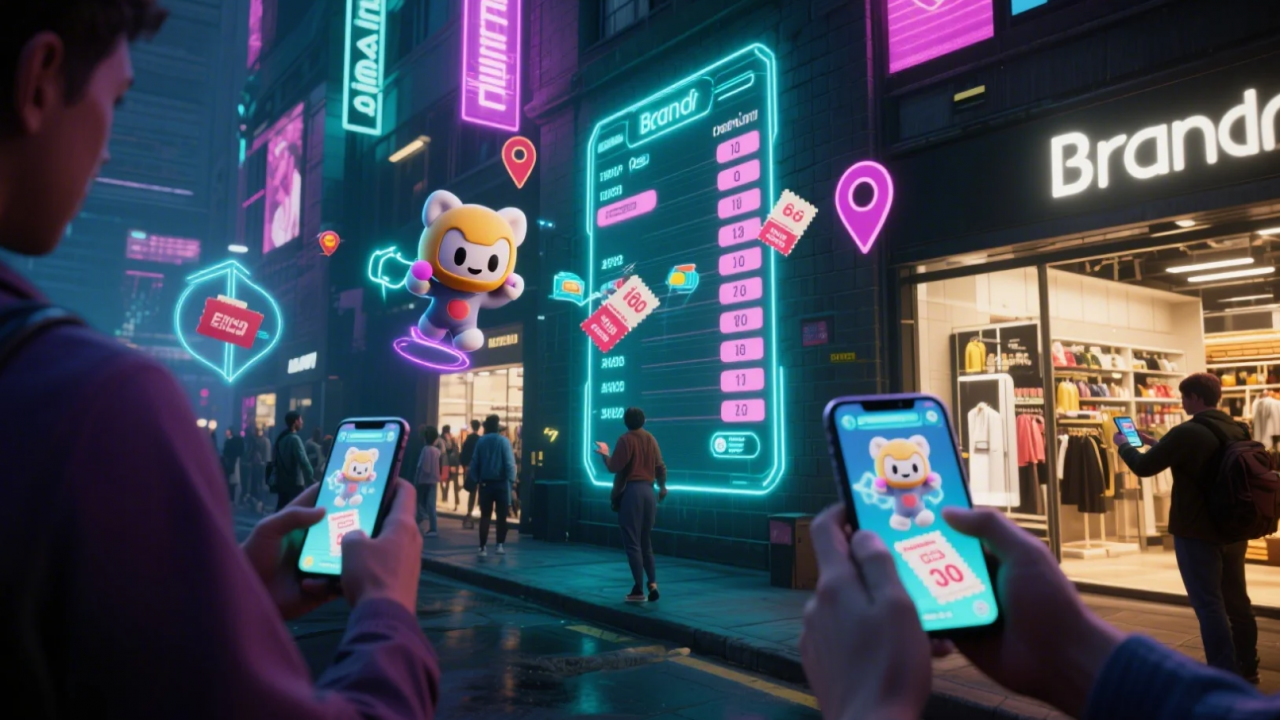What is 3D fashion design?
3D fashion design is a new and digital approach to creating immersive fashion experiences using innovative 3D software. This has changed the traditional fashion experiences into highly dynamic and engaging ones. From prototyping to production, 3d fashion designing has transformed how we create and interact with new fashion elements.
The use of three-dimensional technologies provides creative design techniques. Fashion brands can develop, promote, and sell fashion products in more engaging ways. Moreover, 3D fashion design technologies are environment-friendly, which reduces resource wastage. In this blog, we will explore how 3D fashion approaches are benefiting different areas of the fashion industry and what software is being used to achieve that.
How 3D fashion is impacting the fashion industry
New and Innovative designs
3D fashion design software helps businesses conceptualize, create, visualize, and modify their innovative designs in a digital space. They can experiment with fashion elements and try different textures, styles, and colors that could have been impossible with traditional design methods. The use of 3D fashion tools helps designers check precise fittings using virtual models. This helps them make accurate adjustments before the fabric goes into production.
Eco-friendly fashion practices
Traditional designing and prototyping methods required physical samples. But this is not the case anymore. The use of 3d fashion design technologies promotes sustainable fashion practices. With 3D fashion design software, designers can create digital samples of their products and easily make modifications to them anytime anywhere.
This not only eliminates the need for physical prototypes but also helps reduce material wastage, contributing to an ethical and ecological fashion design approach. Moreover, the technology promotes the use of recyclable and biodegradable products in the manufacturing process, leaving a good impact on the environment.
Accelerated production process
3D fashion design tools streamline the production process. From the development of the concept to the production and market availability, all the steps are controlled virtually.
Designers can redefine their fashion concepts by experimenting with virtual samples. They can easily modify their designs according to new market trends and customer feedback. This reduces delays and accelerates the designing and manufacturing process.
Integration of AR and VR technologies
Integration of augmented and virtual reality technologies helps brands connect with customers more deeply. Brands can showcase their products and designs through virtual means like virtual stores or virtual fashion shows, enabling the customers to try on the fashion products in a realistic environment.

Source:zcool.com @ SPENCERRR
They can view all the product features by rotating it 360 degrees at any angle. In this way, the audience can engage with the brand and product in a realistic environment before actually buying it. Kivisense specializes in providing industry-leading AR and VR solutions for big fashion brands, enhancing their engagement and media visibility through immersive experiences.
Applications of 3D fashion design technology
Virtual fashion shows
Fashion weeks and runways are a thing of the past. The use of 3D fashion technology allows designers to host virtual fashion shows using digital runways. This helps them display their creations to a worldwide audience without any limitations.
For example, Vogue hosted a virtual fashion show providing its viewers with an engaging AR experience. Winter fashion products were showcased in a highly immersive environment using interactive avatars. This helped customers explore their favorite fashion products through engaging shopping experiences.
AR virtual try-on
Retail brands can use 3D fashion design technology to provide virtual try-on experiences to their users. This allows users to visualize any fashion product on themselves in real time. They can get a visual idea of how the product will look like in real life. This promotes customer satisfaction and reduces return rates.
For example, Valentino has introduced a thrilling AR virtual try-on and 3D shoe viewing experience. The high-quality product models and foot tracking technology allow users to experience the highly immersive metaverse shopping experience. This gives the brand a competitive edge over competitors and boosts brand awareness.
3D virtual store
3D virtual stores are the digital replicas of a physical retail shop. Many fashion brands are launching their online virtual stores due to their intuitive interface and sophisticated marketing capabilities. Users can navigate and explore the virtual space using AR and AI technologies and check the 3D models of all the available products.

For example, YSL Beauty launched an immersive VR Pop-Up at cdf Sanya Mall in collaboration with China duty free group. The pop-up aimed to enhance the offline retail experience using virtual reality tools. The campaign’s main target was tech-savvy Gen Z travelers. They were provided Oculus VR headsets to explore YSL’s popular make-up & skincare products in an immersive and interactive way.
Moreover, the event offered clear navigation cues using arrows, demo videos, and real-time guidance from beauty advisors using a VR game design. The campaign was a big hit and attracted over 7000 visitors in a month, enhancing brand engagement and awareness significantly.
3D NFT
The use of 3D NFTs is increasing very quickly in the fashion industry. Designers can create virtual fashion products using 3D fashion design tools and digitize them as 3D NFTs on various blockchain platforms. Users can virtually try on these digital products using AR tools and purchase them in immersive and interactive environments.
For example, Fila Fusion has a limited edition of wearable NFT sneakers. Users can get the futuristic try-on experience by pointing their smartphone camera at their feet. This allows them to wear the NFT sneakers virtually and immerse themselves in a thrilling metaverse experience.
Virtual sampling and prototyping
The era of physical samples and prototypes is gone. 3D design tools have replaced it with virtual samples. These digital prototypes give a highly realistic visualization of the final product. Moreover, designers can collaborate and share digital samples with manufacturers without any physical limitations. This streamlines their communication and accelerates the production process.
Education and training
Many fashion schools and courses employ 3D fashion design technologies to enhance the learning and skills of fashion students. This allows the students to understand and learn new design principles without any physical materials. They can experiment with a variety of materials and textures virtually, boosting their creativity and fashion design skills.
3D fashion design technologies leading the fashion revolution
3D rendering
Luxury fashion brands use 3D renderings to provide three-dimensional digital models of fashion products. These models offer a detailed view of product texture and materials, giving the user an idea about its real-life appearance. For example, Tiffany, a luxury jewelry brand, offers high-quality 3D renderings of their jewelry pieces, so that users can get a three-dimensional view of the item before making a purchase.

3D visualization
Fashion designers use 3D fashion design software because they provide highly realistic, life-like visualization of final product outcomes. This helps the designers to spot any errors in the design and make changes before the production begins. Kivisense offers hyper-realistic 3D visualization and try-on solutions for various fashion products.

3D printing
3D printing technology has revolutionized the production of fashion products like never before. It lets designers create premium quality fashion products like clothes, shoes, and jewelry by developing conceptual frameworks. This helps them create unique fashion products that push the boundaries of traditional fashion.
3D modeling
Luxury fashion brands use 3D modeling to create three-dimensional representations of fashion products. Kivisense integrates highly realistic 3D modeling into the shopping experience, specifically for footwear and fashion. If you want to build and set up the sneaker 3D model for an AR try-on scenario, feel free to contact us and turn your curiosity into a dynamic AR experience.
Best 3D fashion design software
CLO 3D
CLO3D is one of the most advanced clothing design software. Its easy-to-use and intuitive interface lets designers create, view, drape, and simulate garment models in a highly realistic setting. The use of virtual avatars provides a precise fitting and realistic display of how the apparel will appear in real life.

Style 3D
This software is also specifically designed to enhance the apparel design process. It is a cloud-based collaboration platform that offers strong compatibility and advanced editing features. This streamlines the design process by making ideas clear and specific.

Source: Style 3D
Tailornova
It is an innovative web-based fashion design software that helps designers create unlimited made-to-measure clothing designs. A digital sketch board is used to create design sketches which can be laid on the 3D structures based on the body figure, height, and shape, giving an accurately measured garment simulation.

Source: Tailornova
TUKA 3D
It is an advanced 3D garment visualization software developed by Tukatech. It uses 3D avatars and models that can mimic human-like movements like running and dancing. Designers can assess the 3D virtual samples using five techniques that include warp, stretch, weft, x-ray, and pressure.

Source: TUKA 3D
Adobe substance 3D designer
It is an Academy Award-winning fashion design software. It allows designers to create complex patterns and textures through a node-based workflow. With its vast library of materials and the ability to create custom textures, it provides 3D visualizations with high-quality, detailed textures.

Conclusion
3D fashion design technology goes beyond just creating virtual fashion products, it is bringing a new wave of endless creative opportunities in the fashion industry. Do you want to embrace the possibilities and be a part of this fashion transformation? Let Kivisense help you in achieving your goals. Our high-precision 3D fashion design technology can highly restore various materials, such as metal, leather, and PVC. This will help you bring your creative vision to life and set new standards of creativity and innovation in the digital realm.






